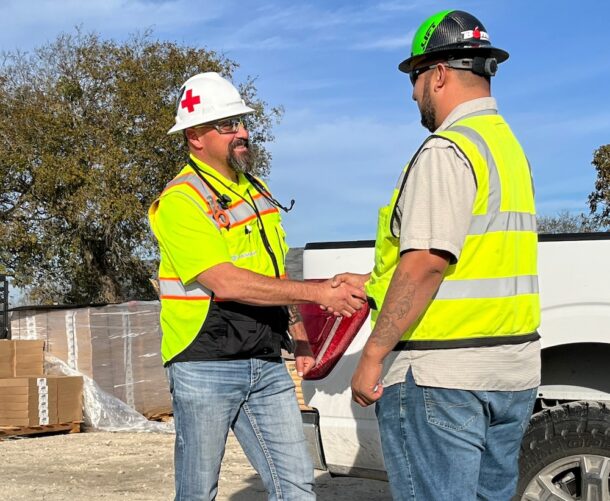There’s a number out there that is pretty remarkable: 65% of construction workers that took their own life sought some sort of medical help within one month prior to the event.
As we near the end of Men’s Mental Health Month—recognized every year in the month of June—suicide rates among construction workers are at an alarming level. According to the Center for Disease Control (CDC), an estimated 6,000 construction workers died by suicide in 2022. In fact, the CDC found that men working in construction have one of the highest suicide rates by population: their rate of suicide is about four times higher than the general population and is the second-highest rate of all workplace industries at 45 per 100,000.

But why is the suicide rate so much higher in construction than other professions? Fact is, construction is an at-risk population for suicide. “Construction is a perfect storm for a predisposition for depression and suicide,” says Dr. Dan Carlin, MD, Founder and CEO of World Clinic / JobSiteCare, a resource to create safe workplaces and deliver great healthcare on the job.
Mental health is no different than, say, heart disease or diabetes. It is a dissolution of brain tissue. “If you are thinking of killing yourself, your brain is not working in a healthy manner,” says Carlin.
Crescendos and Dislocations
So, throw it back to that stat thrown out at the beginning of this article: Is there any relevance to that, you ask? Well, yes. A connection can be made between injury and suicide. Construction jobs in general can be tough on the body, and for those injuries that happened as a direct result of the work, individuals tend to self-medicate for the chronic pain. And, that can come in the form of prescribed drugs, illicit drugs (opiates, for example) and alcohol. But as the medication wears off, withdrawal sets in and the brain becomes vulnerable, with bad feelings magnified.
“Self-reliance and stoicism form a unique crescendo,” says Carlin. And men, more than women, fall into these characteristics. Especially in a male-dominated industry such as construction, the psychosocial aspect sees men focusing on things, whereas women tend to concentrate on people. Men are programmed to just shake things off in the face of adversity; address challenges in a more stoic nature. “Women are much more aware with other people than men.” says Carlin. “Men normally don’t look to others to talk. Men are more mission-focused—get the job done, on time.”

Often is the case in construction, one works long, rigorous hours, and often times away from family for long stretches of time. New projects arise and those old jobs come to an end—or one leaves one job for another that pays 20% more but loses that support network, which creates physical dislocations, says Carlin, and that usual social network goes away, resulting in less contact with family. Because the work dynamic has changed, this can lead to a dislocation to the family network, which can lead to friction and a sense of heightened vulnerability.
And let’s not forget COVID. “COVID was a tremendous paradox that has driven a lot of this due to social isolation, leading to depression and anxiety,” says Carlin.
Social Acceptance
Are we at a place in time where men in particular are more comfortable talking about mental health? It’s getting to a level of acceptance. “We’ve made a lot of progress but we aren’t all the way there yet. It’s not a sign of weakness. We need to be strong to share enough and aware enough to ask,” says Carlin.
Thomas Young, TY Custom Builders and Motherflushers Plumbing, agrees, saying, “I definitely think it’s more acceptable to talk about it. I think the people that are open about their issues or some of the people that are probably the ones that are dealing with it more than anybody. It shouldn’t be ‘hey, I’m an adult or I’m a man and I’m gonna deal with this on my own.’”
Easier said than done, some of the ways to reduce stress and damaging brain tissue is to cut back, be it work hours or substance abuse. Steps to increase brain health include exercise—which helps relieve stress, burning off anxiety—eating well and having a rhythmic day.
“When I’m overworked/stressed, I will just unplug, perhaps binge watch a show, and reach out to someone that helps bring peace,” says Young.
And that reaching out could include social media. “Social media has helped me create great friends,” says Young. “I have friends that live in different countries and will reach out, which can mean a lot.”
But, as we all know, social media, while supportive in so many ways, can have its negative rabbit holes. “With hateful comments and bullying, it was something that bothered me a lot in the beginning and I’d delete right away, but most the time,” says Young, “I can laugh it off or even engage back and it can help engagement.”
There is no one-size-fits-all solution to this. According to Carlin, “The nature of the cure starts at a community level where we need the confidence to ask, ‘how are you doing?’” Carlin says it’s important to establish relationships, and find an opportunity to talk about mental health when the time is right. “We can all learn to be a better listener and share stories about problems we all have as a community. We need to come to an awareness that the solution is us,” says Carlin.



